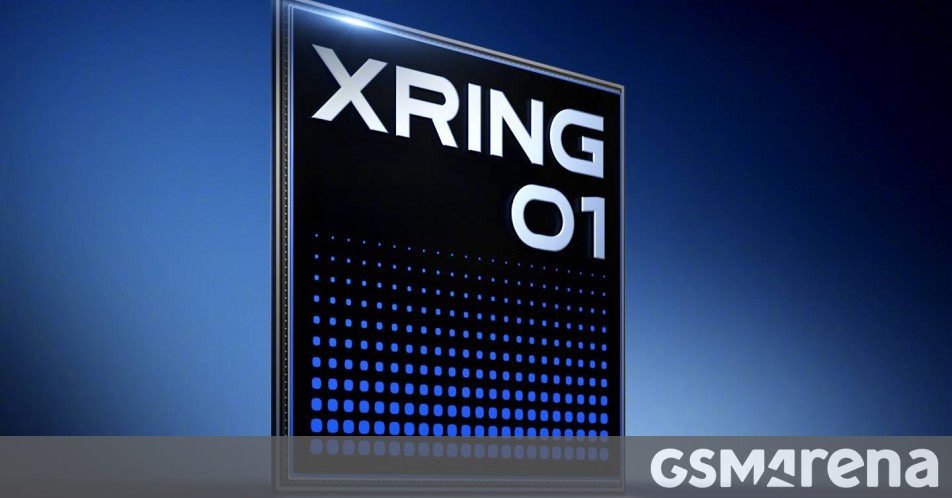Xiaomi’s Xring O1 chipset is emerging as a competitive player, potentially outperforming expectations with early benchmarks suggesting it rivals the Snapdragon 8 Elite. Manufactured on a 3nm node, it features a 10-core CPU with a Cortex-X925 prime core and a configuration that includes three performance and four efficiency cores. Early Geekbench results show multi-core scores in the mid-9,000 range, indicating strong performance. Speculations surrounding its GPU suggest it may utilize an Immortalis-G925 design. Xiaomi’s upcoming May 22 event is expected to unveil the Xiaomi 15S Pro alongside this chipset, marking a significant advancement for the brand.
The Xiaomi Xring O1 chipset might be more competitive than initially anticipated. Early speculations suggested it could rival the Snapdragon 8 Gen 2, but the first benchmarks (if accurate) place it near the Elite.
Xiaomi has confirmed that the O1 is manufactured on a second-generation 3nm node. While specific hardware details are scarce, leaks indicate a configuration featuring a Cortex-X925 prime core, three A725 performance cores, and four A520 efficiency cores, along with an Imagination GPU.


Xiaomi 15S Pro with Xring O1 chipset: details from Geekbench
Trustworthy tipsters @UniverseIce and @Jukanlosreve have pointed to Geekbench results from the Xiaomi 25042PN24C. This is notable for two reasons: firstly, some sources claim this device is the Xiaomi 15S Pro, which is set to succeed the Snapdragon 8 Elite-driven Xiaomi 15 Pro.
The second point of interest is the benchmark results—showing a multi-core score in the mid-9,000s and single-core scores ranging from 2,000 to 3,000. This places the Xring O1 just behind the Snapdragon 8 Elite and ahead of the Dimensity 9400.
While we haven’t benchmarked the Xiaomi 15 Pro, we do have results from the Ultra model. Here’s how it stacks up against the top benchmark from the 25042PN24C:
The Snapdragon utilizes custom Qualcomm CPU cores, so that’s not directly comparable. The Dimensity 9400 is built on a first-generation 3nm node, featuring a Cortex-X925 (3.63GHz), three X4 cores (3.3GHz), and four A720 (2.4GHz).
According to Geekbench, the O1 reportedly has a 10-core CPU instead of the expected 8-core setup (clock speeds are detailed below). This might be an error or a case of misidentifying a new chip. The reported 3.9GHz clock speed is also intriguing—particularly since the Dimensity 9400+ maxes out at 3.73GHz, but only on a single core. Some CPU cores achieve higher clock speeds (e.g., the Snapdragon 8 Elite for Galaxy reaches up to 4.47GHz), though different core designs function differently, making direct clock speed comparisons complicated. Perhaps this reflects advantages of the second-generation 3nm node.
| Xiaomi Xring O1 CPU (according to Geekbench) | |
|---|---|
| Cluster 4 | 2 cores @ 3.90GHz |
| Cluster 3 | 4 cores @ 3.40GHz |
| Cluster 2 | 2 cores @ 1.89GHz |
| Cluster 1 | 2 cores @ 1.80GHz |
Additionally, the GPU is identified as Immortalis-G925 rather than an Imagination design (though that was previously rumored). It’s worth noting that early benchmarks from unverified sources may not be completely reliable, but we should gain more insights later this week.
Xiaomi has a significant event scheduled for May 22 (Thursday), likely featuring the Xiaomi 15S Pro, the Xiaomi Pad 7 Ultra, and the Xiaomi YU7 (the company’s inaugural SUV). It’s also expected to be the showcase for the Xring O1 chipset—potentially not a coincidence if the 15S Pro is indeed the 25042PN24C.
Source | Via 1 | Via 2
